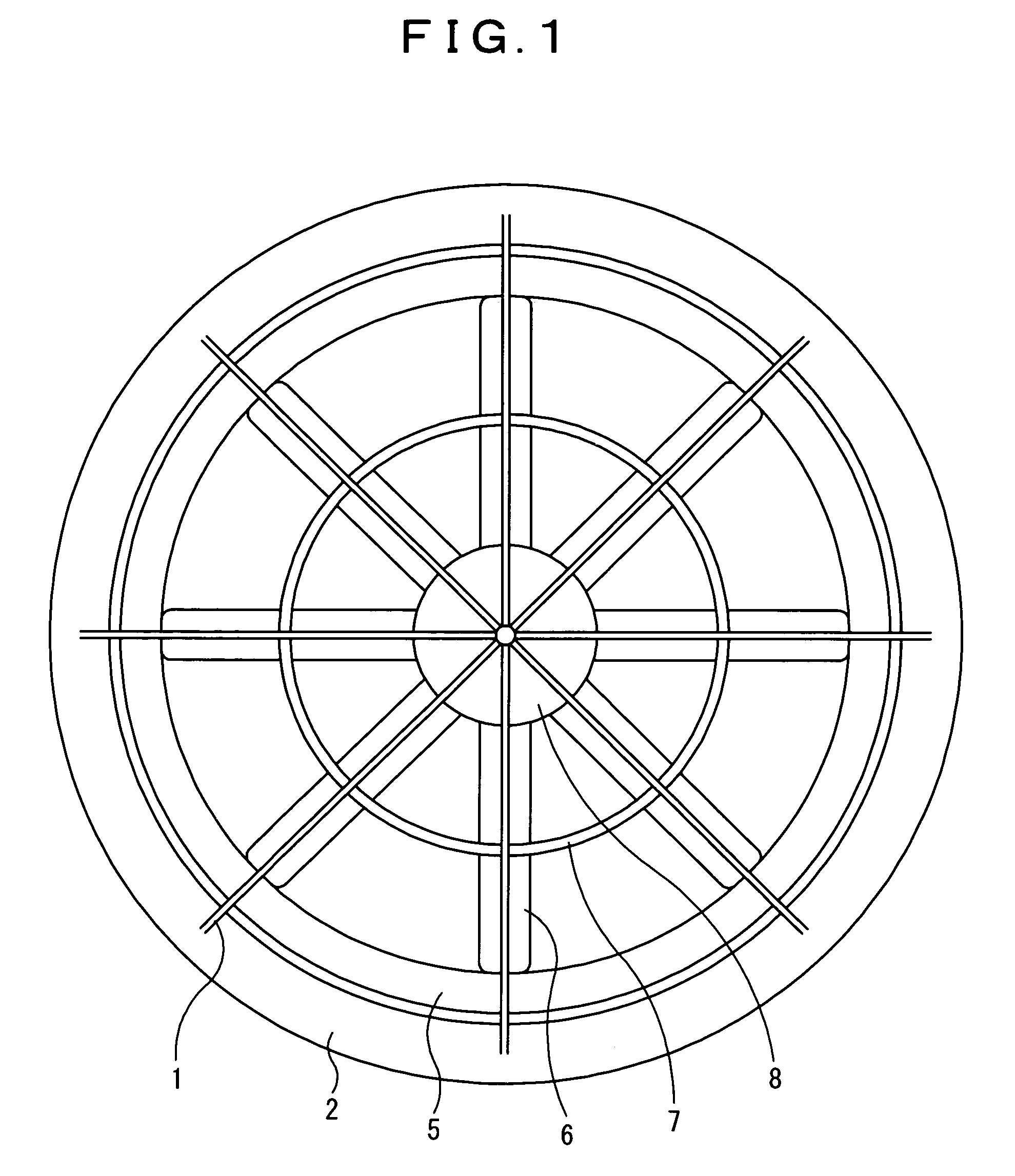Rotatable duct type shrouded rotating wing
a rotating wing and duct technology, applied in the direction of wind motor components, non-positive displacement fluid engines, liquid fuel engine components, etc., can solve the problems of blades falling off due to their own, low efficiency, and energy consumption, and achieve constant and stable rotation, prevent deflection and distortion of rotor blades, and small lift
- Summary
- Abstract
- Description
- Claims
- Application Information
AI Technical Summary
Benefits of technology
Problems solved by technology
Method used
Image
Examples
Embodiment Construction
[0029]FIGS. 1 to 8 illustrate a rotatable duct type shrouded rotating wing according to an embodiment of the present invention wherein electromagnets 3 are arranged around the inner periphery of a shroud 2, while permanent magnets 4 are arranged on the outer periphery of a rotatable duct 5, and a rotating magnetic field is generated by the shroud-side electromagnets 3 to rotate the rotatable duct 5 and rotor blades 6, with consequent generation of lift and thrust.
[0030]In the rotating wing, the air speed at mass points thereof increases with distance from the rotational center. Therefore, when the angles of elevation of the rotor blades are the same at any position, the lift at wing tips becomes excessive in comparison with that at the inner wing (blade) ends, resulting in the wing tips being bent upward with rotation of the rotor blades, and the lift against the underlying position decreasing. To avoid this problem, open wing-tip rotor blades used in the recent rotorcrafts are desi...
PUM
 Login to View More
Login to View More Abstract
Description
Claims
Application Information
 Login to View More
Login to View More - R&D
- Intellectual Property
- Life Sciences
- Materials
- Tech Scout
- Unparalleled Data Quality
- Higher Quality Content
- 60% Fewer Hallucinations
Browse by: Latest US Patents, China's latest patents, Technical Efficacy Thesaurus, Application Domain, Technology Topic, Popular Technical Reports.
© 2025 PatSnap. All rights reserved.Legal|Privacy policy|Modern Slavery Act Transparency Statement|Sitemap|About US| Contact US: help@patsnap.com



